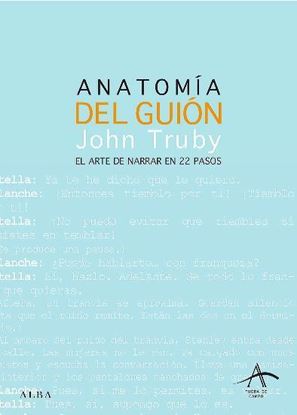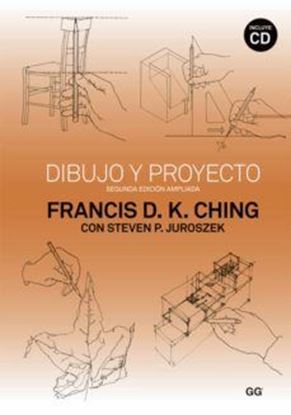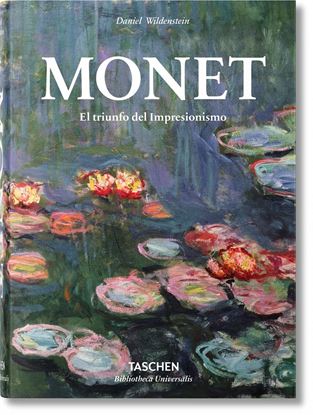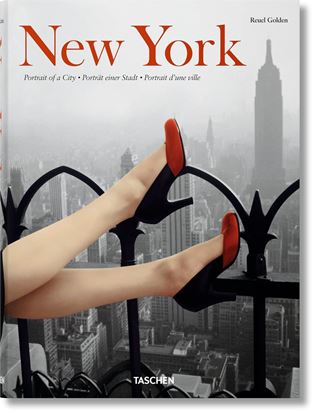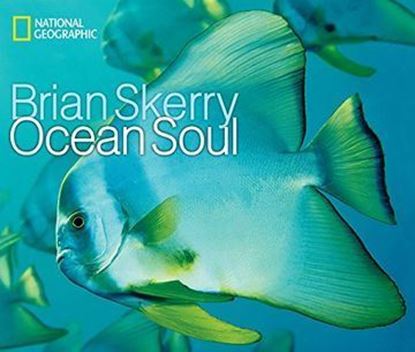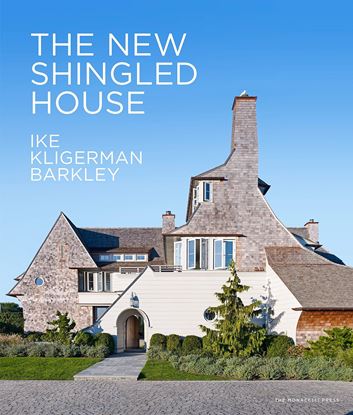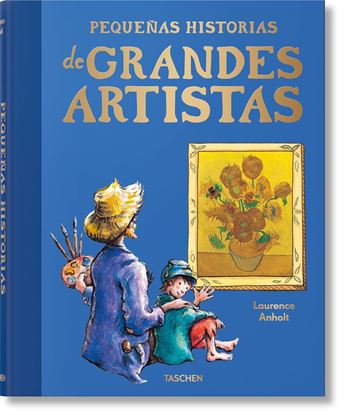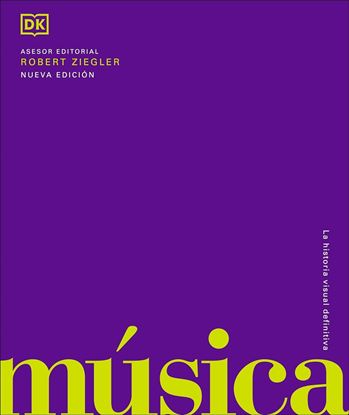

ANATOMIA DEL GUION. EL ARTE DE NARRAR EN
Basado en las clases magistrales de John Truby, Anatomía del guión aborda conceptos y arquetipos extraídos de la filosofía y la mitología para transformarlos en una técnica actualizada para la redacción de guiones cinematográficos de gran profundidad narrativa.
El método de Truby es tan brillante como práctico. Su desarrollo se fundamenta en el crecimiento emocional y moral de sus protagonistas, y ofrece a lectores —profesionales y aficionados— multitud de herramientas y técnicas específicas para lograr que los personajes cobren sentido y el público conecte con ellos; ofrece además recursos para construir tramas sorprendentes, siempre con el sello personal del propio autor. Los 22 pasos para la composición de un guión que propone Truby se pueden aplicar a todo tipo de escritos, desde novelas y cuentos, a artículos periodísticos, memorias y ensayos. Son, sin embargo, en el guión donde han probado su mayor eficacia.
1,995
1,596
DIBUJO Y PROYECTO
El dibujo es una herramienta cognitiva y creativa fundamental a la hora de abordar el proyecto arquitectónico. Bajo esta premisa Francis D. K. Ching nos ofrece en este libro una guía de referencia con la que aprender a utilizar el dibujo como técnica para pensar el proyecto.Organizado en tres grandes bloques que pasan de lo más descriptivo a lo especulativo dibujo por observación, sistemas convencionales de representación gráfica y dibujo imaginativo, el libro explica paso a paso la gran multiplicidad de conceptos y técnicas que entran en juego en el dibujo arquitectónico: desde los principios básicos de la expresión gráfica (la línea, la forma, la sombra o el espacio), hasta los sistemas de representación más frecuentes (el sistema diédrico, la axonometría y la perspectiva cónica) o los innumerables conceptos y herramientas existentes (tales como el rayado, la orientación, la escala, la estratificación o la diagramación).Además de los 1.500 dibujos ilustrados a mano y los cerca de 140 ejercicios que incluye el libro, esta nueva edición ampliada incorpora técnicas de dibujo por ordenador e incluye un CD con tutoriales. El estudiante de arquitectura y el arquitecto encontrarán en estas páginas una ayuda práctica y didáctica no solo para representar los proyectos, sino también para pensar espacialmente.
3,300
2,640
MONET HC (E) (BU)
No other artist, apart from J. M. W. Turner, tried as hard as Claude Monet (1840–1926) to capture light itself on canvas. Of all the Impressionists, it was the man Cézanne called “only an eye, but my God what an eye!” who stayed true to the principle of absolute fidelity to the visual sensation, painting directly from the object.
It could be said that Monet reinvented the possibilities of color. Whether it was through his early interest in Japanese prints, his time as a conscript in the dazzling light of Algeria, or his personal acquaintance with the major painters of the late 19th century, the work Monet produced throughout his long life would change forever the way we perceive both the natural world and its attendant phenomena. The high point of his explorations was the late series of water lilies, painted in his own garden at Giverny, which, in their approach toward almost total formlessness, are really the origin of abstract art.
This biography does full justice to this most remarkable and profoundly influential artist, and offers numerous reproductions and archive photos alongside a detailed and insightful commentary.
1,800
1,440
NEW YORK, PORTRAIT OF A CITY
This book presents the epic story of New York on nearly 600 pages of emotional, atmospheric photographs, from the mid-19th century to the present day. Supplementing this treasure trove of images are over a hundred quotations and references from relevant books, movies, shows, and songs. The city’s fluctuating fortunes are all represented, from the wild nights of the Jazz Age and the hedonistic disco era, to the grim days of the Depression and the devastation of 9/11 and its aftermath, as its brokenhearted but unbowed citizens picked up the pieces.
New York’s remarkable rise, reinvention, and growth are not just the tale of a city, but the story of a nation, From the building of the Brooklyn Bridge to the immigrants arriving at Ellis Island; from the slums of the Lower East Side to the magnificent art deco skyscrapers. The urban beach of Coney Island and the sleaze of Times Square; the vistas of Central Park and the crowds on Fifth Avenue. The streets, the sidewalks, the chaos, the energy, the ethnic diversity, the culture, the fashion, the architecture, the anger, and the complexity of the city are all laid out in this beautiful book. This is the greatest city in the world after all and great are its extremes, contradictions, and attitude.
4,995
3,996
OCEAN SOUL (B) (OF3)
Ocean Soul is a love story. It is a story of discovery. It is a story of hope. The story begins when a boy who loves the sea attends an event with underwater photographers and has an epiphany: "I had always wanted to explore the oceans, but I now understood how I would do this. I would do it with a camera." With sheer determination, hard work, and a little bit of luck the boy, named Brian Skerry, realized his dream with more than 20 awe-inspiring articles for National Geographic magazine. Now, with Ocean Soul, he showcases his stunning photography and describes his adventurous life in a gripping portrait of the ocean as a place of beauty and mystery, a place in trouble, and ultimately, a place of hope that will rebound with the proper attention and care.
995
796
THE NEW SHINGLED HOUSE (OF3)
The architectural style of the classic American summer, the shingled house can suggest the beach, the countryside, the mountains, and even the city. AD100 architects Ike Kligerman Barkley, one of the most successful firms practicing in a traditional style today, presents 14 houses that celebrate the simple wood shingle's infinite flexibility--ranging from richly historic to sculptural and experimental. The New Shingled House includes examples throughout the fabled seaside resorts of New England--Martha's Vineyard, Block Island, and the Hamptons--as well as houses in California's Bay Area and Point Loma, on a pristine mountain lake in South Carolina, and a Scandinavian influenced family residence in Connecticut. All are characterized by a sense of graciousness and generosity that makes them unique spaces for the owners and enviable spaces for readers. The versatility of the shingle style allows the designers to explore formal ideas and to respond to client preferences and taste. The houses thus achieve the architects' fundamental goal: when their clients enter their new house for the first time, they should feel as though they have always lived there. This stunning visual presentation features new photography by noted interiors photographer William Waldron, who has captured the graciousness and generosity of the elegant interiors and welcoming porches and terraces that make these houses so inviting and timeless.
999
799
PEQUEÑAS HISTORIAS DE GRANDES ARTISTAS
Descubra a los artistas más importantes del mundo, incluidos Frida Kahlo, Leonardo da Vinci y Vincent van Gogh, y las historias de niños reales que los conocieron. La entrañable serie de libros de arte para niños de Laurence Anholt, que ha vendido millones de copias en todo el mundo, recopilada por primera vez en un volumen inspirador.
2,500
2,000
MUSICA. LA HISTORIA VISUAL DEFINITIVA
A lo largo de la historia, la música ha evocado todo el espectro de las emociones humanas, independientemente del país o la cultura. Este libro de historia de la música analiza esa experiencia universal desde una perspectiva cronológica y global: desde los primeros instrumentos musicales, elaborados con huesos y caracolas, hasta la sofisticación de las guitarras eléctricas y los sintetizadores.
Dado que cada tema musical se presenta en una concisa y atractiva doble página, es fácil viajar entre mundos musicales separados por continentes y siglos de distancia en un recorrido de unos pocos capítulos. Y no son solo las notas y los sonidos lo que se examina, sino también las absorbentes historias que tienen detrás.
2,200
1,760


